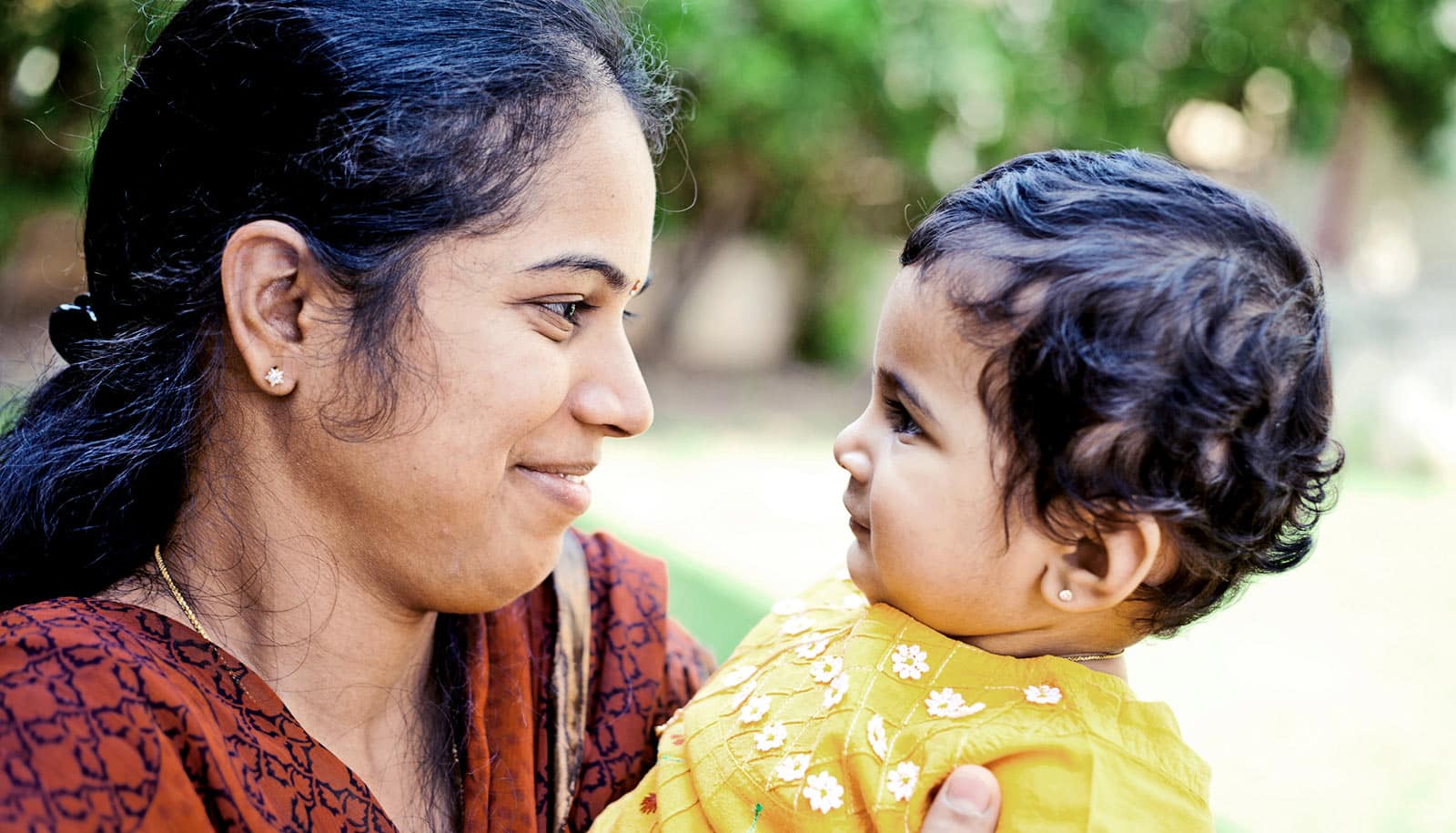Babies organize mothers’ verbal responses, which promotes more effective language instruction, and infant babbling is the key, new research shows.
It’s long been known that babies modify their sounds to become more speech-like in response to feedback from their caregivers, and that they learn things have names because caregivers name objects. But how do specific types of babbling elicit particular parental behavior?
“We expected that mothers would respond more often when babbling was more mature, and they did.”
To answer this, researchers recorded and recombined the vocalizations of 40 nine-month-olds and their mothers, using a “playback paradigm,” widely used in animal studies, to assess how specific forms of sounds and actions by infants influence parental behavior.
Researchers conducted sessions in a playroom with toys. They outfitted infants with denim overalls in which a wireless microphone was concealed. The lab was outfitted with video cameras to record responses during live play.
“We expected that mothers would respond more often when babbling was more mature, and they did,” says Michael Goldstein, associate professor of psychology at Cornell University.
“The increased rate of response meant more language-learning opportunities for the baby. The mothers’ speech was also more likely to contain simplified, learnable information about linguistic structure and the objects around the baby,” Goldstein says. “Thus, by varying the form and context of their vocalizations, infants influence maternal behavior and create social interactions that facilitate learning.”
The researchers also found that mothers responded more often and more informatively to vocalizations directed at objects than those that were undirected.
“We suspected this would be the case,” says Rachel Albert, assistant professor of psychology at Lebanon Valley College, “because the object the baby is looking at creates an opportunity for the mother to label it, so she’s more likely to respond with specific information than when a baby is babbling at nothing.”
Babies do stuff in bursts but actually learn over time
In this way, write the researchers, “the infant’s own vocalizations serve to structure social interactions in ways that facilitate learning…. These results contribute to a growing understanding of the role of social feedback in infant vocal learning, which stands in contrast to the historical view of prelinguistic vocalizations in which babbling was assumed to be motor practice, with no function in the development of communication and language.”
The study, which appears in Developmental Science, sheds light on correlations between early babbling and later language and studies finding that babies with more advanced syllables in their babbling have more advanced speech and vocabulary when they’re older.
“We think there may be a kind of feedback loop, where for example parents’ labeling objects and rewarding more advanced vocalizations by responding more frequently promotes word learning,” says Jennifer Schwade, senior lecturer in psychology at Cornell University.
The results may clarify delayed vocal development in at-risk populations and those with hearing delays, Down syndrome, and autism spectrum disorder.
How accents at home affect baby language
Fewer vocal interactions between children and caregivers could “cascade into long-term differences in response expectancies, impacting language development over time as opportunities for learning from contingent parental responses are reduced,” write the researchers.
Source: Cornell University



